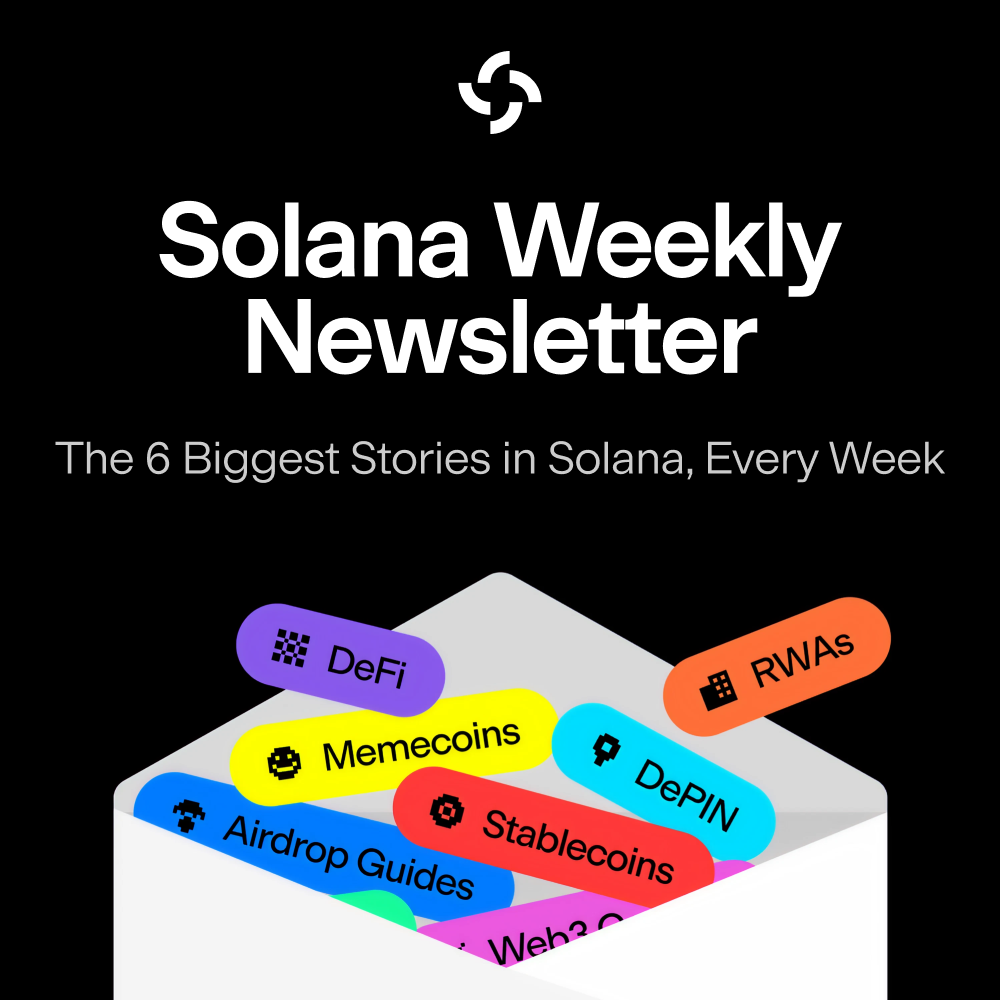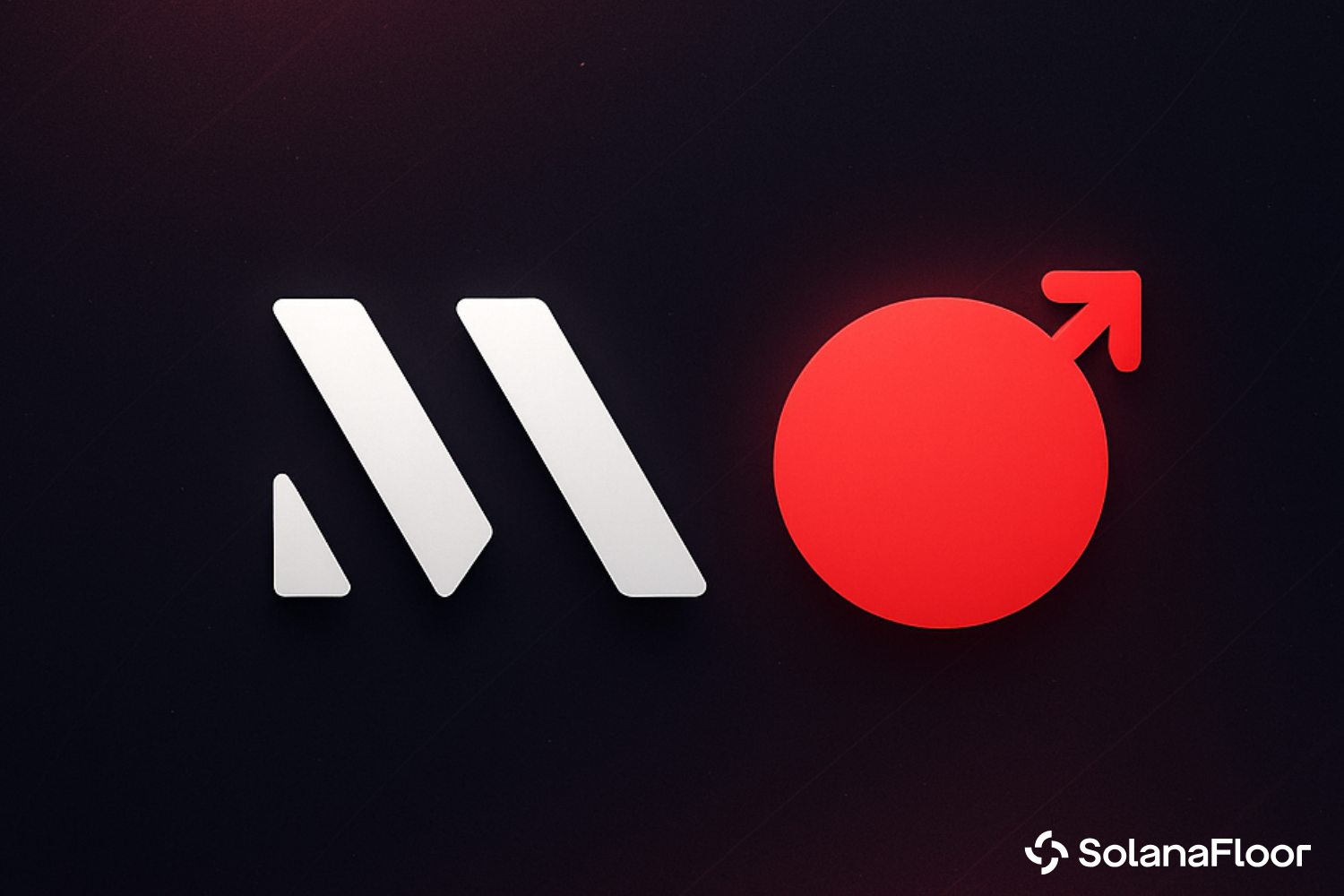
Solana’s ICO Revival: How MetaDAO and Metaplex Are Redefining Token Launches
MetaDAO and Metaplex are reshaping Solana’s ICO scene with fairness and transparency, generating over $927K monthly in Revenue
- Published:
- Edited:
The Solana ecosystem has entered a new phase in its token launch evolution. Once dominated by bonding curve experiments and meme-fueled frenzies, the spotlight is now shifting toward structured and community-driven ICOs. MetaDAO and Metaplex are leading this shift, reintroducing credibility and sustainability to Solana’s Internet Capital Market (ICM) narrative.
 As of late October 2025, MetaDAO and Metaplex have collectively generated more than $927K in monthly protocol fees. MetaDAO alone brought in more than $560K in October, while Metaplex’s Genesis protocol earned $367K monthly through genesis. These numbers are impressive, but the real question is whether their ICOs deliver lasting returns or simply ride temporary hype cycles.
As of late October 2025, MetaDAO and Metaplex have collectively generated more than $927K in monthly protocol fees. MetaDAO alone brought in more than $560K in October, while Metaplex’s Genesis protocol earned $367K monthly through genesis. These numbers are impressive, but the real question is whether their ICOs deliver lasting returns or simply ride temporary hype cycles.
The ICM Thesis: From Open Chaos to Curated Fairness
Solana’s low transaction fees and high throughput make it ideal for global token issuance. The concept of an “Internet Capital Market” captures that ethos: anyone can launch, anyone can participate. Yet, platforms like Pump.fun, home to more than 12K daily token launches, have turned this openness into chaos. With over 50% rug rates and volatile micro-markets, many participants have grown fatigued by the endless churn of short-lived projects.
MetaDAO and Metaplex emerged in response, offering curated and “unruggable” launches. Their focus is on fairness, transparency, and vetted teams. MetaDAO’s governance layer runs on futarchy, where prediction markets guide project decisions, while Metaplex leverages anti-bot auctions and onchain buybacks to ensure equitable participation. Together, they are shaping a new, trust-based version of Solana’s ICM.
ROI and Reality: From Explosive Peaks to Sustainable Floors
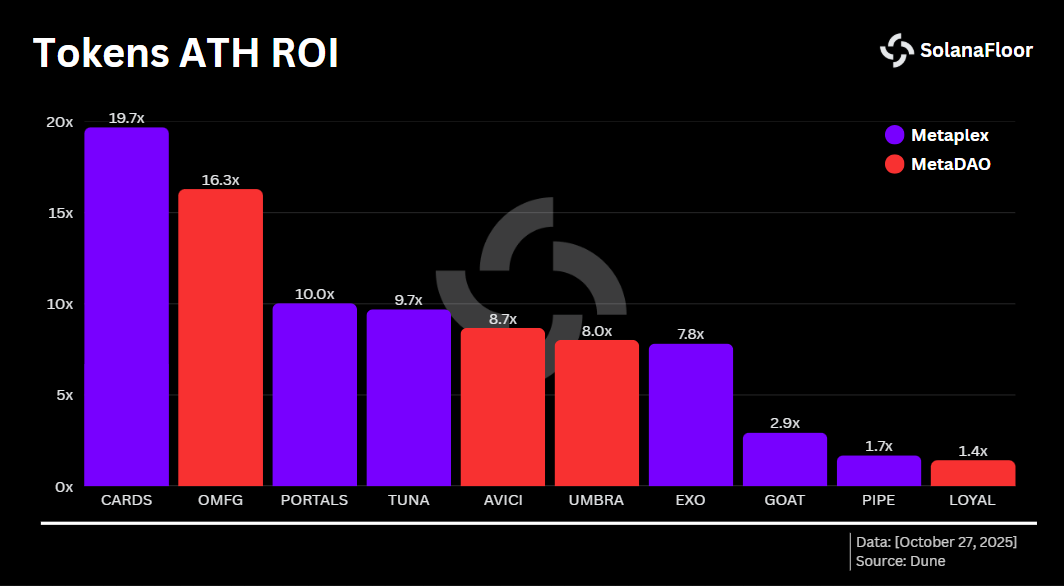 MetaDAO’s 2025 launches including Umbra, Omnipair, Avici, and Loyal delivered remarkable returns. Across the four, average all-time-high ROI reached 8.6x, with $UMBRA peaking at 8x and holding 3.1x three weeks after launch. $OMFG reached 16x, stabilizing around 5.6x, while $AVICI corrected from 8.6x to 7x as markets cooled, and new entrant $LOYAL started at 1.4x.
MetaDAO’s 2025 launches including Umbra, Omnipair, Avici, and Loyal delivered remarkable returns. Across the four, average all-time-high ROI reached 8.6x, with $UMBRA peaking at 8x and holding 3.1x three weeks after launch. $OMFG reached 16x, stabilizing around 5.6x, while $AVICI corrected from 8.6x to 7x as markets cooled, and new entrant $LOYAL started at 1.4x.
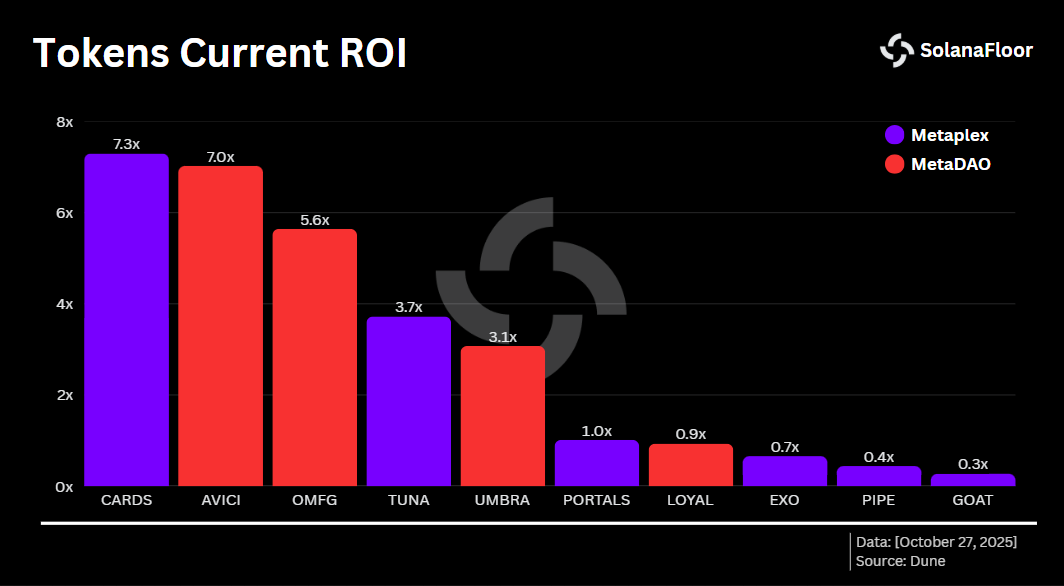 Metaplex’s Genesis protocol has also sustained strong performance. Its six ICOs averaged 8.63x ATH ROI, led by Collector Crypt (19.7x), Portals (10x), and DefiTuna (9.7x). While around 30% of tokens retraced after initial surges, most stabilized above pre-launch valuations.
Metaplex’s Genesis protocol has also sustained strong performance. Its six ICOs averaged 8.63x ATH ROI, led by Collector Crypt (19.7x), Portals (10x), and DefiTuna (9.7x). While around 30% of tokens retraced after initial surges, most stabilized above pre-launch valuations.
Edit: While $PIPE was originally expected to launch through Genesis, Metaplex has confirmed to SolanaFloor that this did not eventuate.
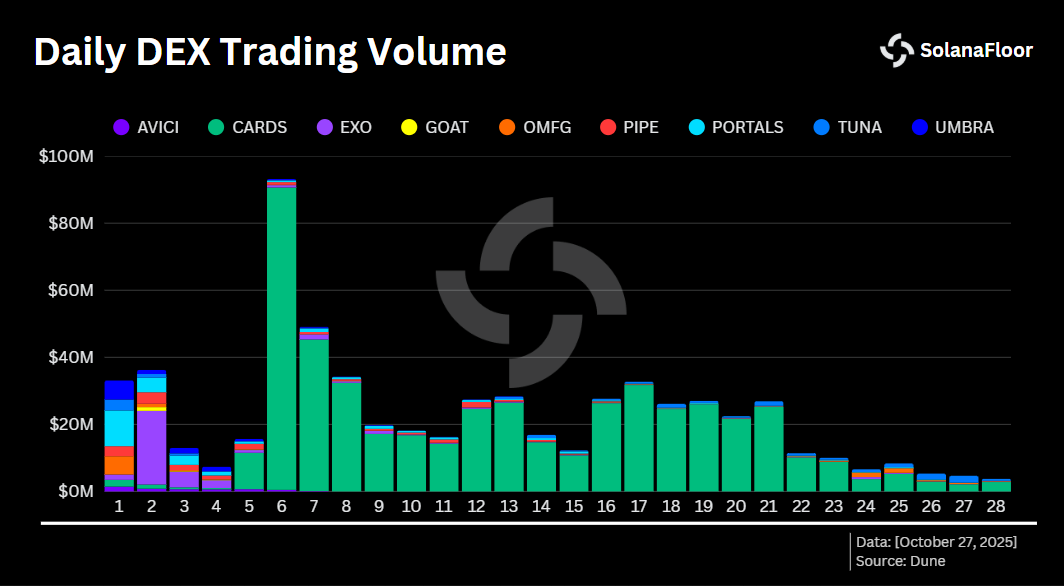 Although most launched tokens have maintained steady price levels, trading volumes fell sharply after their initial days. Only $CARDS recorded higher activity on day five, surpassing its launch volume with more than $90 million traded on day six, largely fueled by TCG-related hype. Overall, nearly all tokens saw a drop of over 99% in trading volume within the first week.
Although most launched tokens have maintained steady price levels, trading volumes fell sharply after their initial days. Only $CARDS recorded higher activity on day five, surpassing its launch volume with more than $90 million traded on day six, largely fueled by TCG-related hype. Overall, nearly all tokens saw a drop of over 99% in trading volume within the first week.
MetaDAO’s Allocation Model: A Fairness Benchmark?
At the heart of MetaDAO’s model lies its pro-rata deposit system, which distributes tokens based on users’ share of total deposits. Investors deposit funds into a 24 to 48 hour pool, and allocations are calculated as:
(Your deposit ÷ Total deposits) × Tokens offered
Caps, often 5% per wallet, limit whales, while KYC layers and Solana’s MEV-resistant architecture block bot interference. In Umbra’s sale, $155M in deposits chased a $750K raise. MetaDAO retained $3M in LP liquidity while refunding $152M proportionally.
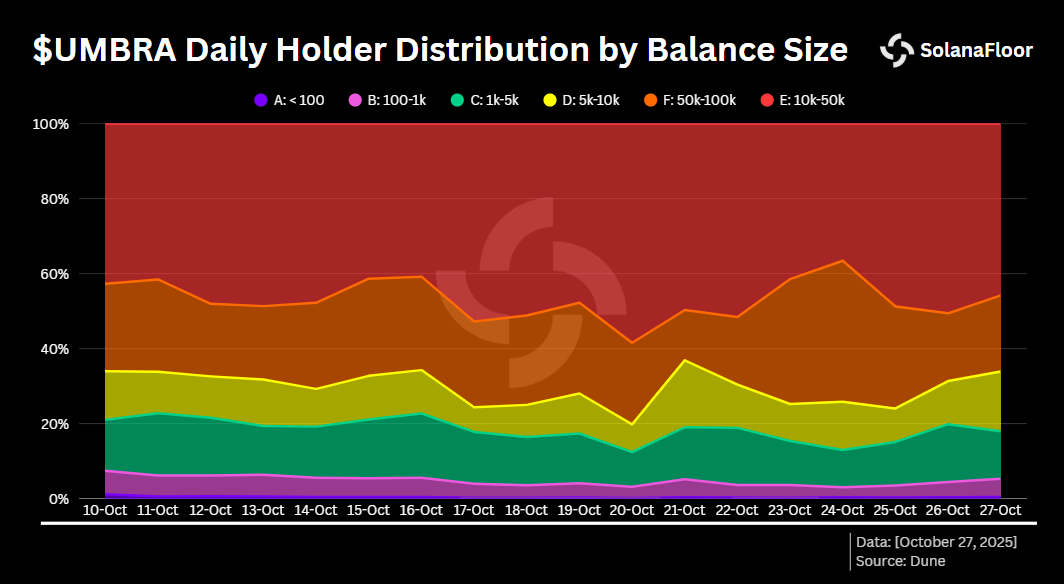 How effectively did MetaDAO’s allocation model perform compared to the bot-dominated ICOs of 2017? While its design seeks to promote fairness and mitigate manipulation, heavy oversubscriptions may have diluted allocations and left questions about whether the mechanism truly achieved its intended transparency. An analysis of daily $UMBRA holder distribution shows that most circulating tokens are concentrated in wallets holding between 10K and 50K tokens, which, based on $UMBRA’s current valuation, likely represent retail participants.
How effectively did MetaDAO’s allocation model perform compared to the bot-dominated ICOs of 2017? While its design seeks to promote fairness and mitigate manipulation, heavy oversubscriptions may have diluted allocations and left questions about whether the mechanism truly achieved its intended transparency. An analysis of daily $UMBRA holder distribution shows that most circulating tokens are concentrated in wallets holding between 10K and 50K tokens, which, based on $UMBRA’s current valuation, likely represent retail participants.
Oversubscription and Market Signal
Umbra’s record-breaking deposits triggered a ripple effect across Solana. The massive participation reinforced confidence in MetaDAO, boosted $META demand, and inspired follow-up projects such as Avici which attracted tens of millions in deposits. Oversubscription acts as a market signal, proof of community appetite, but it also challenges future launches to maintain proportional hype.
Metaplex faced similar dynamics. After DeFiTuna’s $2.5M raise, subsequent projects such as Portals. Sustained demand drives validation but also raises the bar for future participants seeking meaningful allocations.
The Path Forward: Building a Sustainable ICO Meta
MetaDAO and Metaplex are redefining how capital and credibility intersect on Solana. Their models balance transparency, fairness, and performance, establishing new norms for decentralized fundraising. Oversubscription and allocation dilution remain operational challenges, but the data tells a clear story: investors trust vetted launches over viral ones.
As Solana’s ICM narrative matures and Jupiter DTF enters the fold, the next phase of token distribution could blend accessibility with accountability. For Solana, that balance may be the key to sustaining the next cycle of DeFi innovation. It may also ignite a new wave of competition among ICO launchpads similar to the memecoin launchpad wars, and it will be interesting to see which platform ultimately takes the lead.
This piece is part of our Solana Data Insights series. Make sure to subscribe to Solana Data Insights for weekly onchain analysis.
Read More on SolanaFloor
Why Did Solana Survive What BASE Couldn't?

